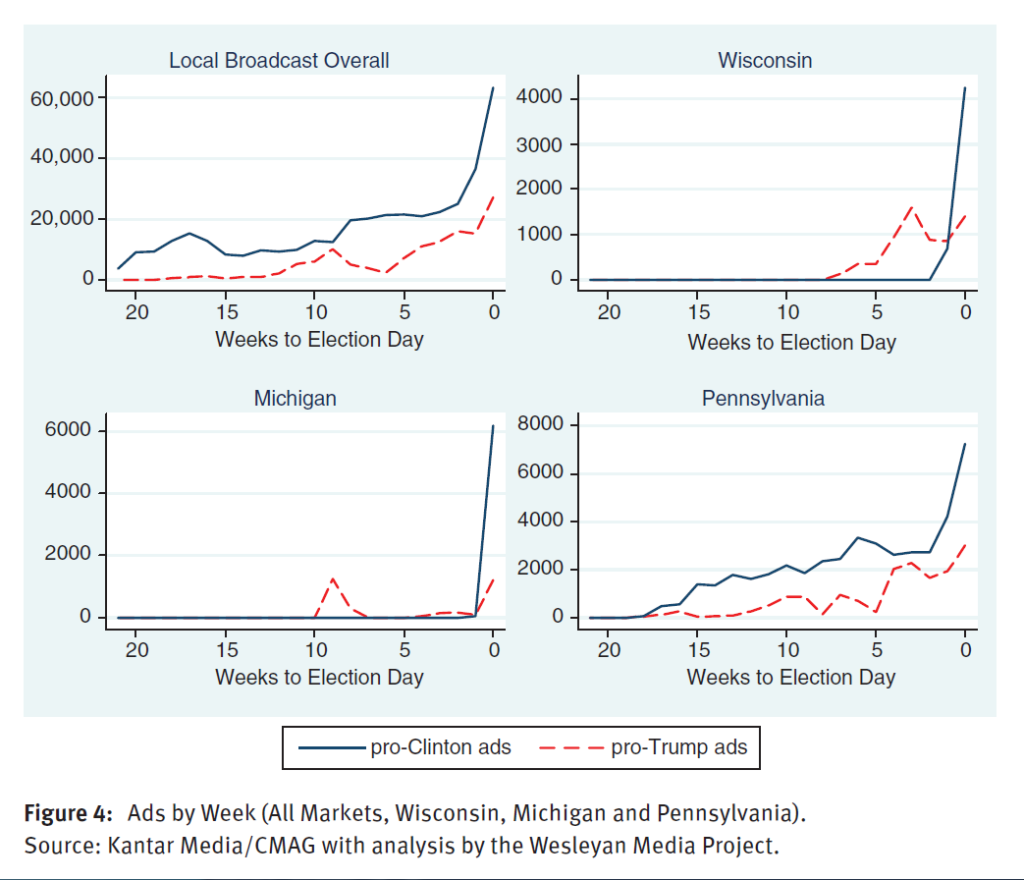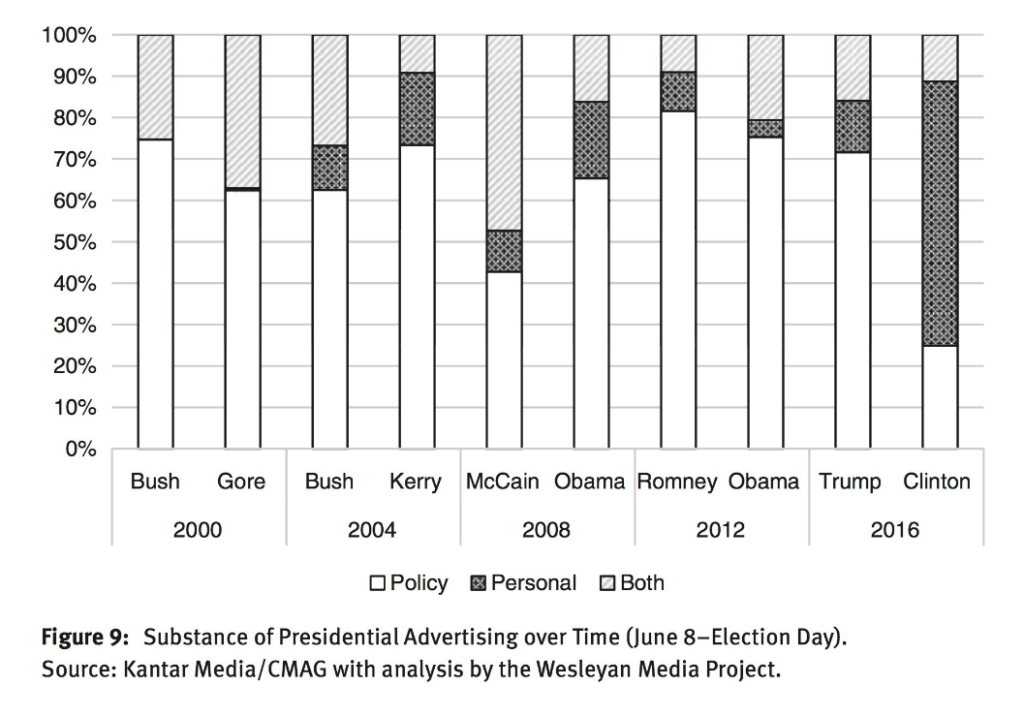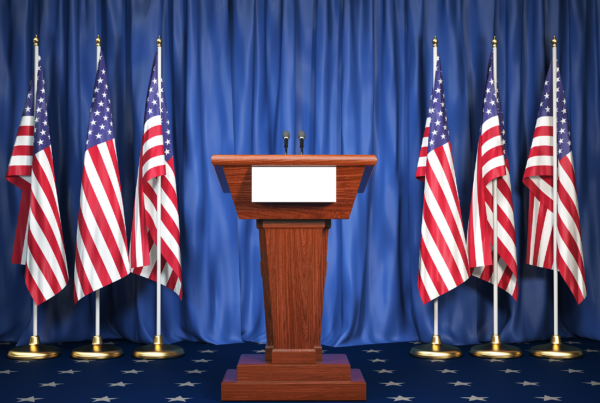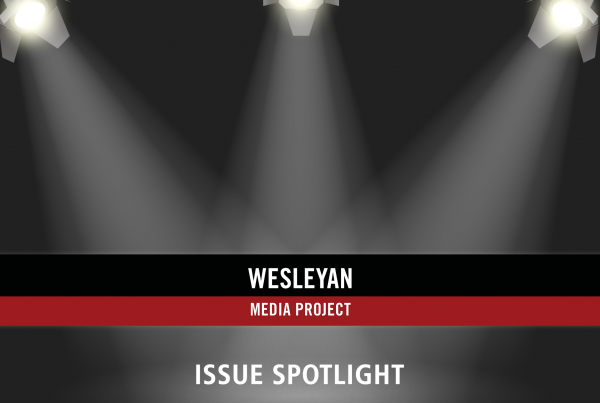Wesleyan Media Project shares lessons, analysis from 2016 election cycle
(MIDDLETOWN, CT) March 6, 2017 – The 2016 presidential campaign broke the mold when it comes to patterns of political advertising. But, in a new publication, the Wesleyan Media Project directors say “Not so fast” to those who argue that advertising no longer matters in elections.
The article published in The Forum: A Journal of Applied Research in Contemporary Politics (open access through mid-April 2017) shows that the presidential race featured far less advertising than the previous cycle, a huge imbalance in the number of ads across candidates, and one candidate who almost ignored discussions of policy. Yet, at the congressional level, political advertising appeared far more ordinary. The authors share lessons about advertising in the 2016 campaign, and argue that its seeming lack of effectiveness may owe to the unusual nature of the presidential campaign with one nonconventional candidate and the other using an unconventional message strategy.
Furthermore, the authors demonstrate that:
1) Clinton’s unexpected losses came in states in which she failed to air ads until the last week.
See Figure 4 below, which shows the number of pro-Trump and pro-Clinton ads aired on broadcast television during each week, both overall (top left panel) and in three key states.

![]()
2) Clinton’s message was devoid of policy discussions in a way not seen in the previous four presidential contests.

Other big lessons drawn in the paper include:
- The impact of advertising may depend on the larger media environment and knowledge of the candidates. Ie. It’s much more difficult for advertising to have an impact in a media environment that is saturated with sensational media coverage of the campaign—and of two already well-known candidates—but that does not mean that all advertising fails to work.
- Message matters, and a message repeated endlessly does no good unless it resonates with a sufficient number of the right voters. Team Clinton’s message that Trump was unfit for the presidency may not have been enough.
- What happens at the presidential level does not always follow down ballot.
![]()
Also available:
- Big picture data on ad airings and spending in the 2015-16 cycle
- The increasing importance of local cable buys as a complement to traditional broadcast airings
- Tone and focus of presidential ads compared to previous elections
- The continued importance of outside groups as sponsors of political advertising, and the declining role played by political parties
- Traditional patterns followed in Senate/House race advertising
- The Clinton campaign’s overwhelming dominance of advertising, and its efforts in key states. See Figure 3 and note that this map masks important variations over time. For example, although Michigan is blue in the map, Clinton’s advantage came only in the last week of the campaign (see Figure 4 above).

![]()
Full text of the article is available via The Forum (open access through mid-April 2017)
![]()
To arrange an interview with one of the Wesleyan Media Project’s co-directors, please contact:
media@wesleyan.edu.



